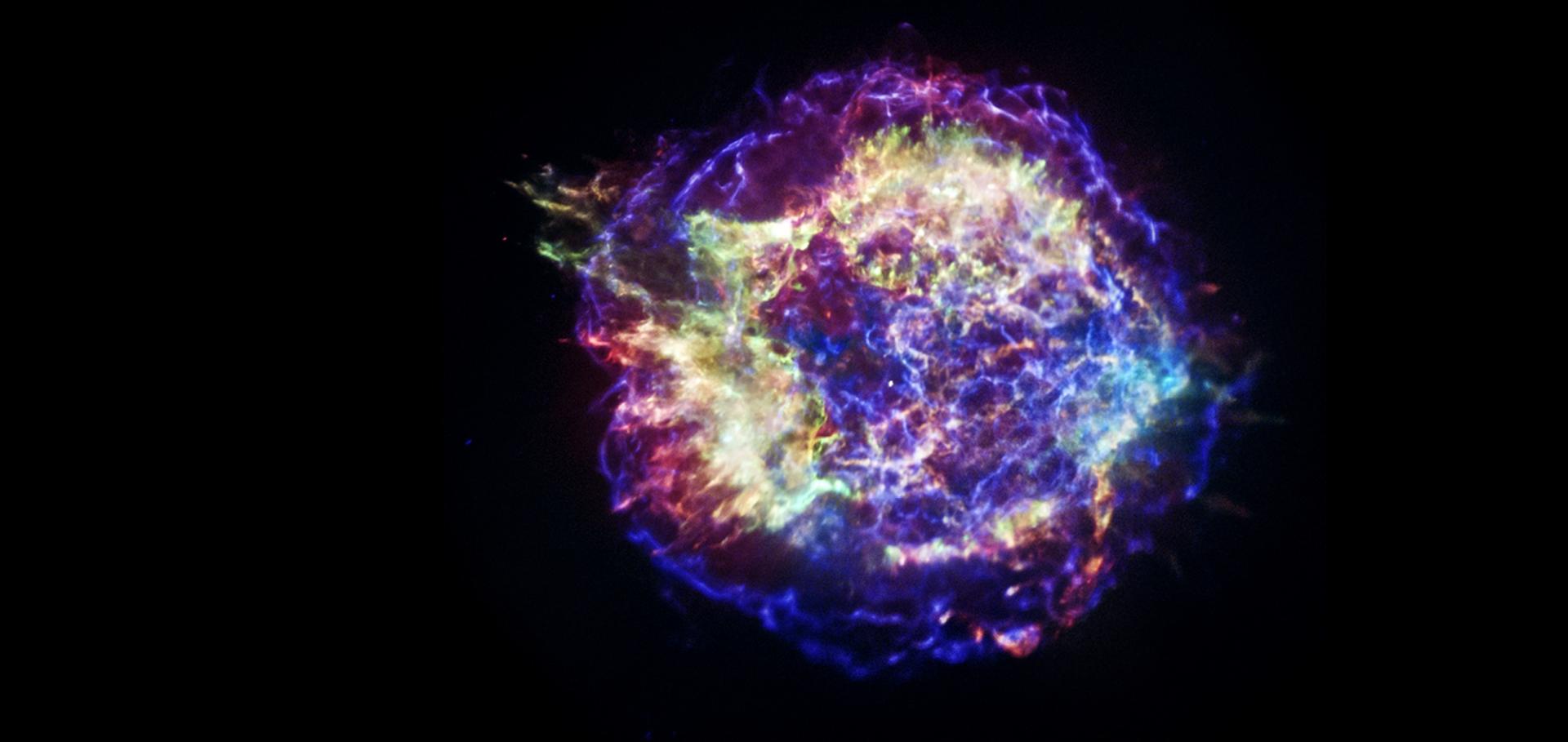Multiwavelength Pulsations and Surface Temperature Distribution in the Middle-aged Pulsar B1055–52
The Astrophysical Journal American Astronomical Society 963:2 (2024) 138
Abstract:
We present a detailed study of the X-ray emission from PSR B1055–52 using XMM-Newton observations from 2019 and 2000. The phase-integrated X-ray emission from this pulsar is poorly described by existing models of neutron star atmospheres. Instead, we confirm that, similar to other middle-aged pulsars, the best-fitting spectral model consists of two blackbody components, with substantially different temperatures and emitting areas, and a nonthermal component characterized by a power law. Our phase-resolved X-ray spectral analysis using this three-component model reveals variations in the thermal emission parameters with the pulsar’s rotational phase. These variations suggest a nonuniform temperature distribution across the neutron star’s surface, including the cold thermal component and probable hot spot(s). Such a temperature distribution can be caused by external and internal heating processes, likely a combination thereof. We observe very high pulse fractions, 60%–80% in the 0.7–1.5 keV range, dominated by the hot blackbody component. This could be related to temperature nonuniformity and potential beaming effects in an atmosphere. We find indication of a second hot spot that appears at lower energies (0.15–0.3 keV) than the first hot spot (0.5–1.5 keV) in the X-ray light curves and is offset by about half a rotation period. This finding aligns with the nearly orthogonal rotator geometry suggested by radio observations of this interpulse pulsar. If the hot spots are associated with polar caps, a possible explanation for their temperature asymmetry could be an offset magnetic dipole and/or an additional toroidal magnetic field component in the neutron star crust.The Thousand-Pulsar-Array programme on MeerKAT – XII. Discovery of long-term pulse profile evolution in seven young pulsars
Monthly Notices of the Royal Astronomical Society Oxford University Press (OUP) 528:4 (2024) 7458-7476
X-Ray and Near-Infrared Observations of the Middle-aged Pulsar B1055–52, Its Multiwavelength Spectrum, and Proper Motion* * Based on observations obtained with XMM-Newton, an ESA science mission with instruments and contributions directly funded by ESA Member States and NASA. Based also on observations made with the NASA/ESA Hubble Space Telescope, obtained at the Space Telescope Science Institute, which is operated by the Association of Universities for Research in Astronomy, Inc., under NASA contract NAS 5-26555. These observations are associated with program #15676.
The Astrophysical Journal American Astronomical Society 952:2 (2023) 134
X-ray and near-infrared observations of the middle-aged pulsar B1055-52, its multiwavelength spectrum, and proper motion
(2023)
The Thousand Pulsar Array program on MeerKAT – IX. The time-averaged properties of the observed pulsar population
Monthly Notices of the Royal Astronomical Society Oxford University Press 520:3 (2023) 4582-4600


